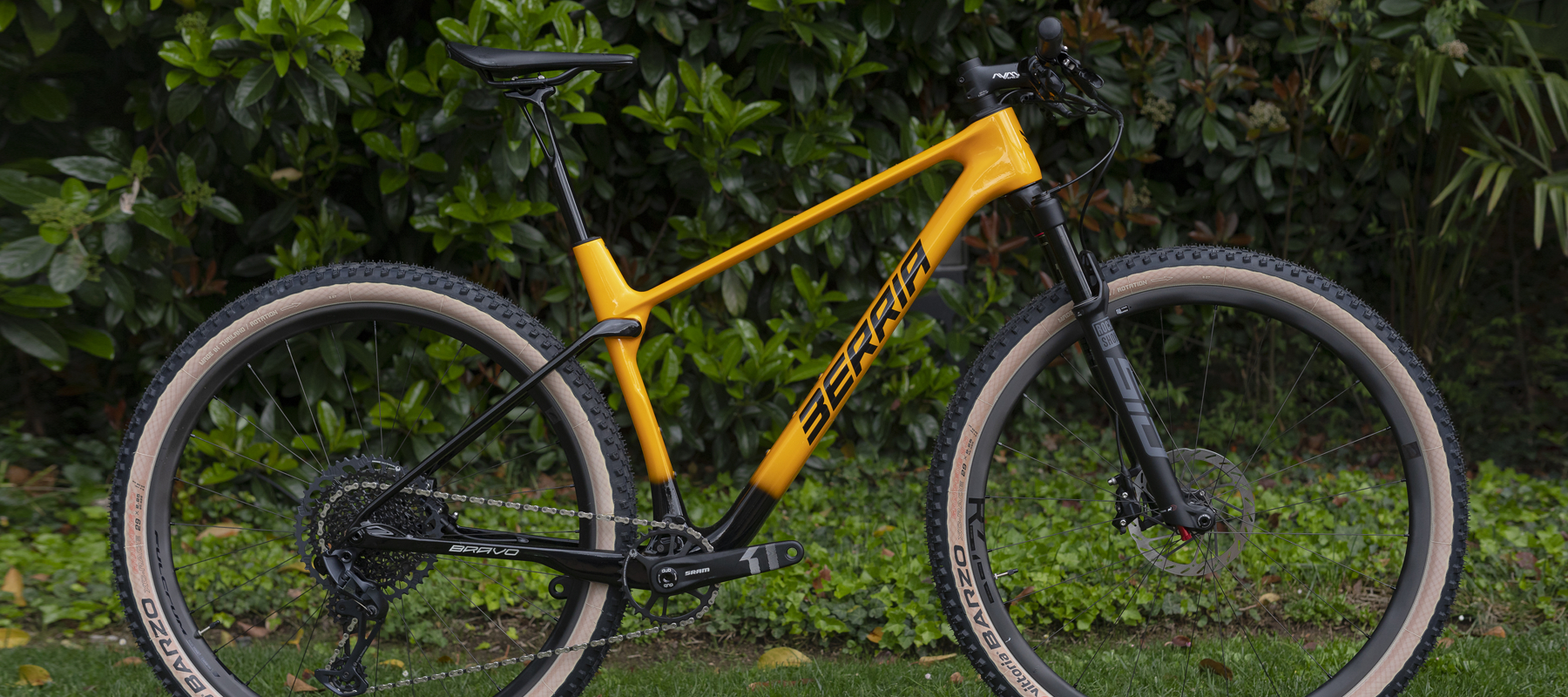Early Verdict
The integration of compliance into a cross-country hardtail makes a lot of sense, the best bit is Berria’s Softex technology takes nothing away from the sharpness that defines XC hardtails.
Pros
- +
Stiff and responsive
- +
Lightweight
- +
Simple maintenance-free flex compliance
- +
Different wheel options
Cons
- -
2.4in max tire clearance
- -
Classic tight XC handling makes it more nervous on technical terrain
Why trust BikePerfect
When mountain bikes first crawled off the road and into the ooze there was a huge amount of evolution to adapt to their new habitat, one of the biggest developments was the edition of suspension and although front suspension may have come relatively easily, the implementation of effective rear suspension was a longer process.
This bred an evolutionary stepping stone in the form of the soft tail, which essentially uses the flex of the frame and a damper to provide added compliance. Although the best full-suspension mountain bikes have become the norm in almost every facet of mountain biking, there are still some modern soft tails available.
Berria's new Bravo is one of these modern-generation soft tails that use advanced materials and design to offer hardtail mountain bike simplicity and lightness with some added bump absorption. I was invited by Berria out to Gerona to see the latest models and go for a test ride on the new bike.

Design and geometry
Although the refinement of full-suspension designs saw the soft-tail almost become extinct, Berria isn't the only brand with a renewed interest in added compliance. There has been a little bit of a revival, most notably from two of the biggest bike brands around with Trek's 60mm Supercaliber and Specialized’s Epic World Cup which has 75mm of travel.
Berria’s Bravo is a lot closer to a true soft tail though and it sports 28mm of travel that's aimed at improving tracking and smoothing out vibrations. The travel is delivered using a combination of Berria’s Softex Carbon Flex Control rear suspension system and TIBIA seatpost, rather than an air shock or other specific damper unit.
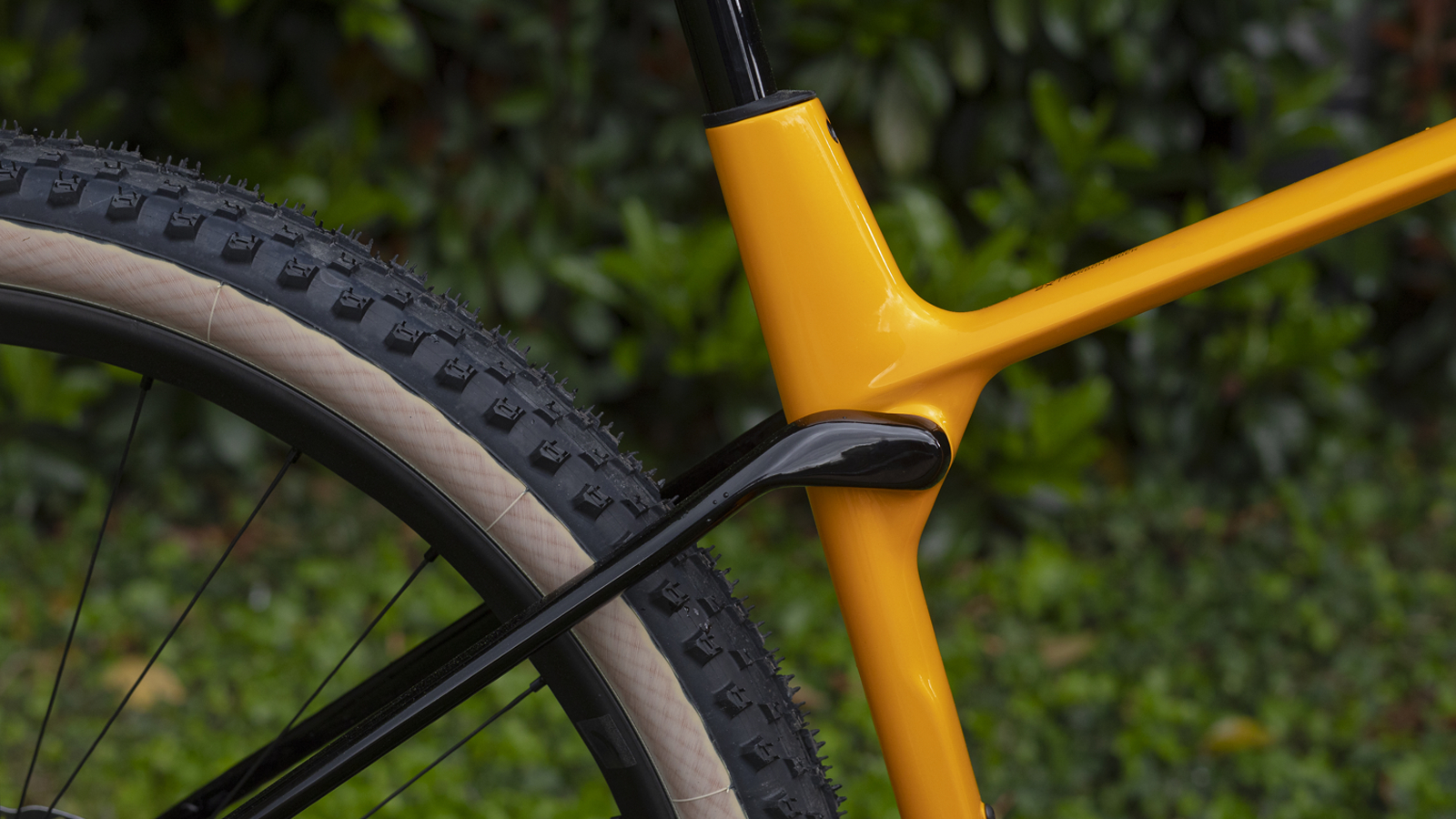
The double-height chainstay and seatpost actually work in conjunction, with the seatpost absorbing low force, high-frequency vibrations while the chainstay takes the sting from larger impacts. While that means there are no options to tune the performance it keeps maintenance to a bare minimum, weight lower, and Berria says it allows faster reaction times to impacts.
The Bravo is constructed using Berria’s own HM2X carbon, which is a combination of Toray T700 and T800 fibers. The standard frame weighs 1,270g, which is a bit heavier than some of the top XC framesets around, but a lot lighter than the lightest full-suspension mountain bikes. There is also a BR team edition version that drops the weight down to 999g and is the model that will be raced at World Cups by the Berria Vittoria Factory Team.

The headtube and seat tube angles are size specific, between 66.5-degree head angle and 75.1-degree seat angle on the extra small and 68-degree head angle and 74.1-degree seat angle for the large. My size medium test sample features a 67.5-degree head angle, 74.4-degree seat angle, and a wheelbase of 1147mm. The medium bike's reach is pretty standard for a cross-country bike at 448mm although the stack height is a little taller at 624mm. The 430mm chainstays and 63mm bottom bracket drop are the same on all bike sizes.
The seat clamp is fully internal, as is the ICS2 cable routing which enters the frame through the headset to keep things tidy. There are two bottle bosses, one on the seat tube and another two-position bottle boss setup on the downtube. The brake calipers are post mount, it has a BB92 bottom bracket, and the frame is equipped with a UDH universal derailleur hanger.
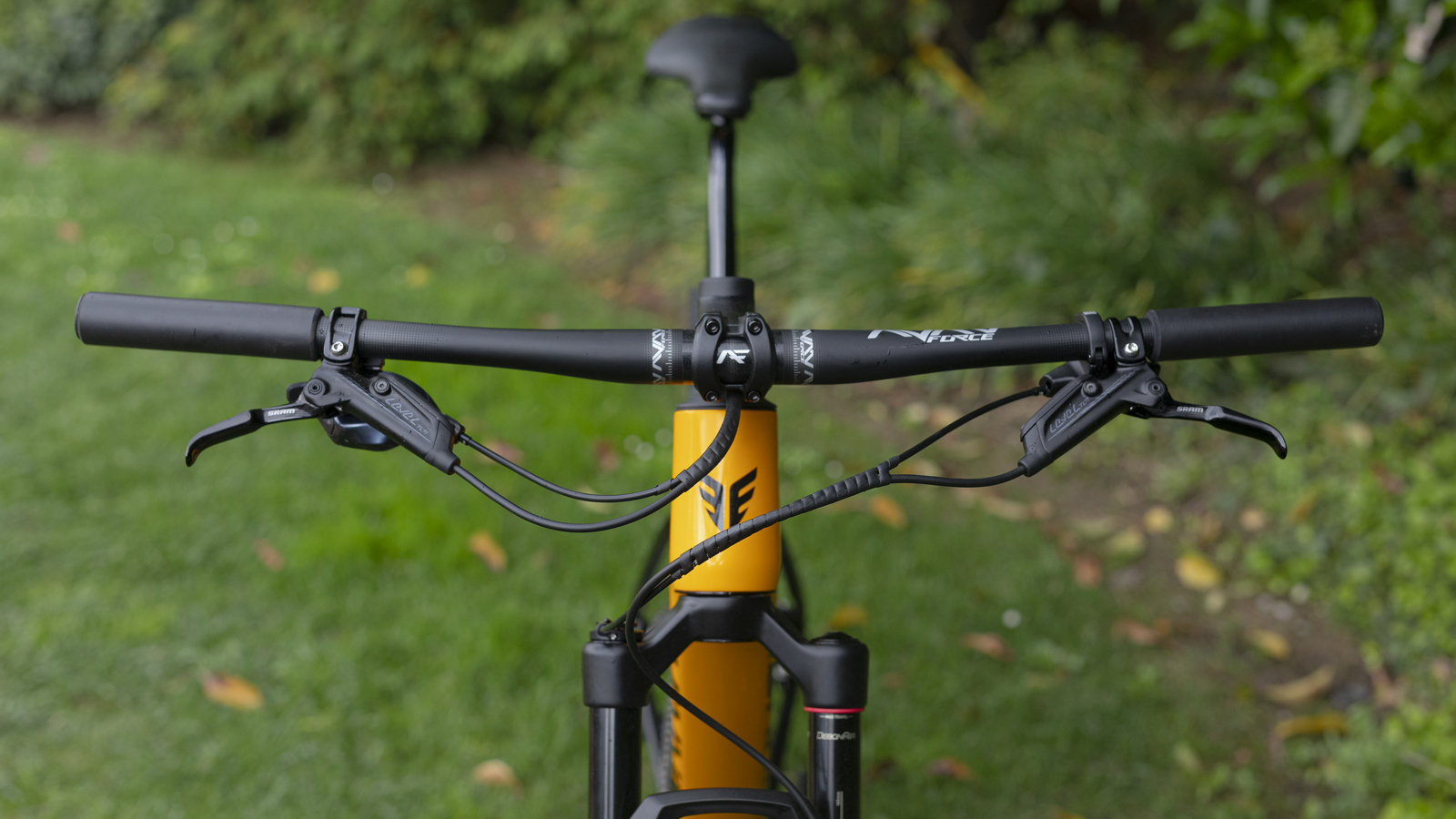
Components and build
I rode the Bravo 7 which has a RockShox SID SL fork with 110mm of travel up front, while the Bravo 6 and Bravo 5 are specced with 100mm forks. The bike features a SRAM GX Eagle 12sp drivetrain and SRAM Level TLM Disc brakes with 180mm / 160mm rotors.
Berria offers three-wheel options which give customers the choice of speccing either Fulcrum Red Zone, Mavic Crossmax SL S, or Fulcrum Red Zone Carbon. My test bike came equipped with the 1445g Fulcrum Red Zone Carbon mounted with a pair of Vittoria Barzo 2.25in tires, although there is space between the stays to fit 2.4in tires.
The Tibia Flex Seat post is made by Berria and has zero offset and a 27.2 diameter. The stem and handlebar are also from Berria, with the handlebar being Berria’s carbon Avanforce AF1 XCO model.
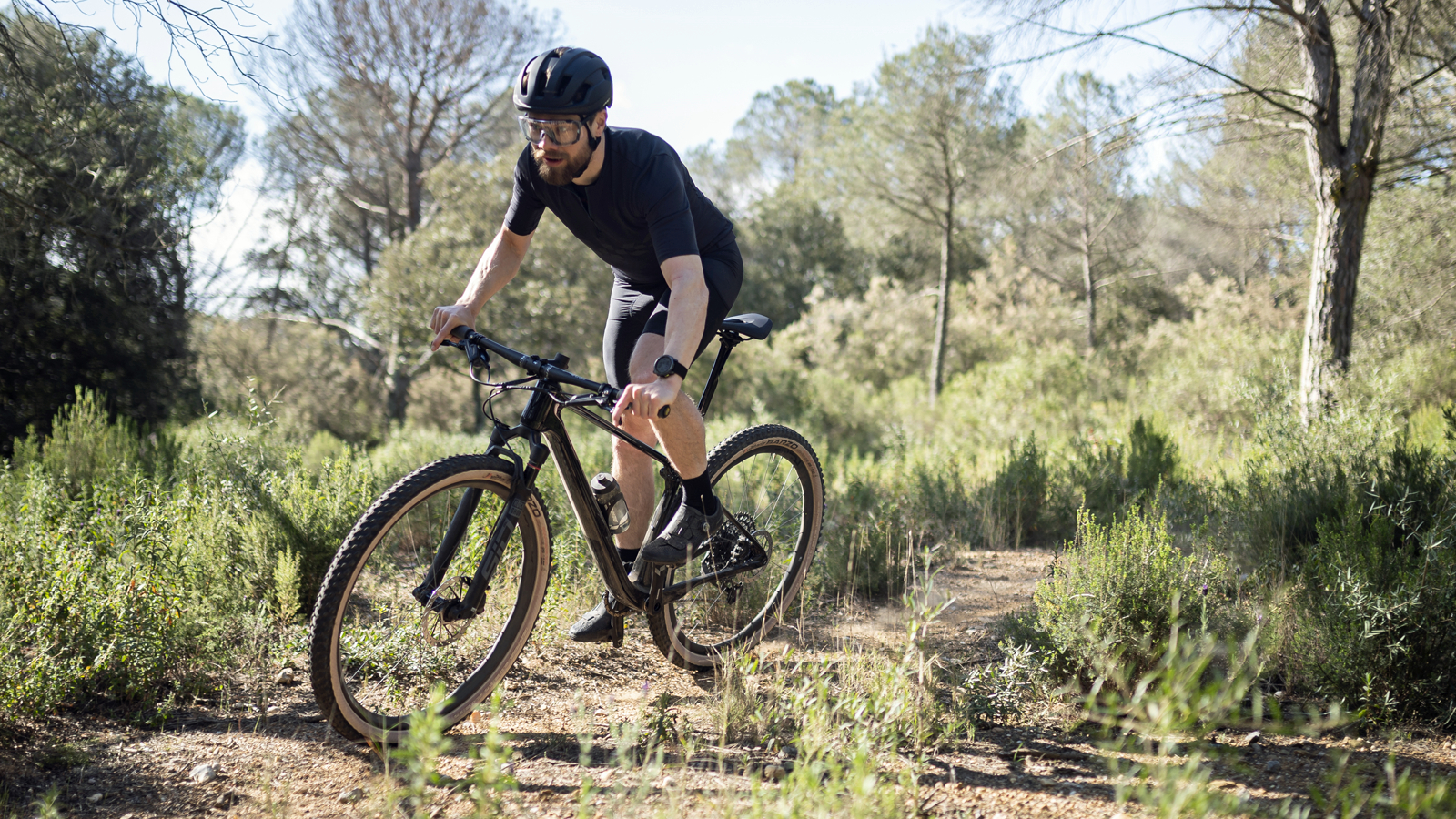
Ride and performance
The first half of my ride snaked its way through some tight and narrow singletrack trails before sampling the kind of gravel trails that have made Gerona such a well-known cycling mecca.
Being a soft tail with 28mm of travel, the Bravo unsurprisingly doesn’t offer much in the way of noticeable squish. Stamp on the pedals and the bike shoots forward with the enthusiasm that you would expect from a lightweight race-orientated hardtail. The levels of compliance are pretty subtle, there is a slight sense of numbness from the trail but otherwise, the bike doesn’t necessarily feel like it's doing much in the way of bump absorption. The fatiguing nature of the vibrations and impacts that it’s targeting only really become properly noticeable over longer distances which is where the bike would probably start to excel. It also must be noted that I didn't ride it back to back with a hardtail either, so there is a possibility it would be more noticeable with direct testing for a better comparison.

Berria wanted to keep the steering responsive and the Bravo certainly achieved that. I rode the bike before I had a chance to gander at a geometry chart and I would have guessed the head angle was a bit steeper based on the ride feel. The direct handling meant it was quick to thread through the narrow snaking trails as they dodged between trees.
The agile handling characteristics combined with the rigid post meant things were a bit more nervous on steeper sections of the trail though. In these front-loading situations, you can also start to feel the limits of the SID SL too. It's a great lightweight fork, but even on moderately technical cross-country terrain I much prefer the accuracy and control of a bit burlier 34mm legged option. Saying that, much like the Canyon Exceed I have previously tested, the fork suits the overall vibe fast, light, and mellow vibe of the Bravo.
I wasn't able to weigh the Bravo 7 myself, however, Berria claims that the complete weight of an XL Bravo 7 will come in at 10.26kg which is decent, especially when you consider that the top-of-the-range version of the Canyon Exceed weighs a quoted 9.84kg (size unspecified).
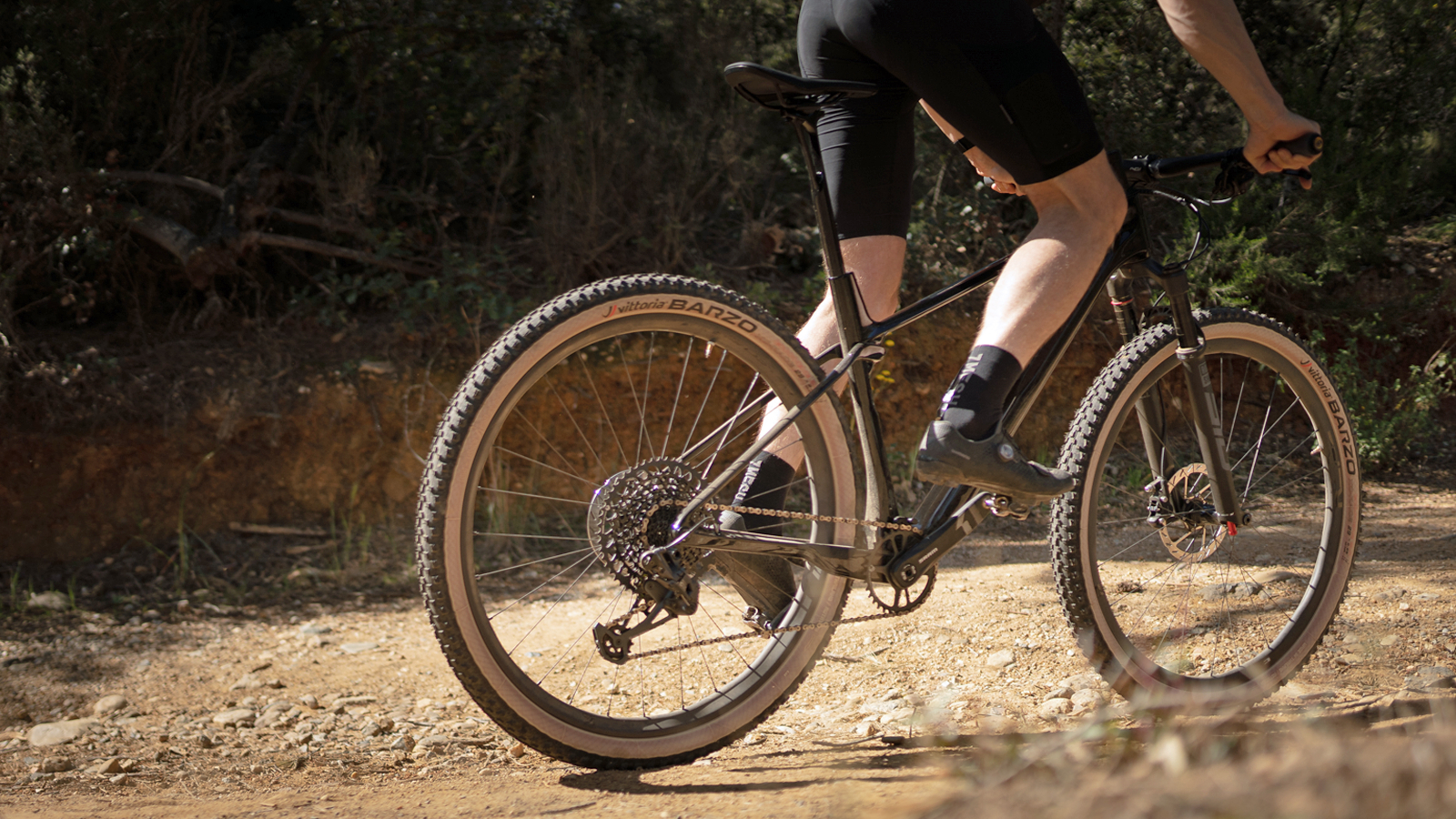
Verdict
During my limited time on the Bravo I wasn’t able to get a tangible feel for the soft tail benefits, however, it certainly extinguished any doubts I had. Despite the 28mm of flex that's built into the frame, the Bravo still has the aggressive kick and sharp handling that you would expect from a cross-country race hardtail.
In the moment it's hard to distinguish any noticeable compliance, but Berria’s soft tail science makes a lot of sense to me and I am sure that if I started racking up the miles that unnoticeable suspension action would soon start showing its worth by absorbing small vibrations that can add to fatigue. Considering the system essentially adds almost no noticeable weight or softness to the ride means it's a bit of a no-brainer if you are in the market for a mile-munching off-road hardtail.
Test conditions
- Temperature: 77 to 86 degrees F / 25 to 30 degrees C
- Conditions: Dry, dusty, and rocky
- Trails: Tight technical singletrack, fast Gerona gravel
Tech specs: Berria Bravo 7
- Frame: HM2X carbon
- Fork: RockShox SID SL, 110mm
- Drivetrain: SRAM GX Eagle
- Brakes: SRAM LEVEL TLM Disc 180mm/160mm
- Wheelset: Fulcrum Red Zone Carbon
- Tires: Vittoria Barzo 2.25in
- Seatpost: Berria Tibia Flex Seat post
- Saddle: Fizik Taiga alloy rail
- Bar and stem: Berria Avanforce AF1 XCO handlebar, Berria stem
- Sizes available: XS-L
- Reach: 448mm (size medium)
- Head angle: 67.5 degrees
- Seat tube angle: 74.4 degrees
- BB drop: 63mm
- Price: $N/A / £4,400 / €5,599
- Weight: 10.26kg (size large, claimed)

Graham Cottingham joined the BikePerfect team as our senior tech writer in 2020. With over 20 years of riding experience, he has dabbled in downhill, enduro, and gravel racing. Not afraid of a challenge, Graham has embraced bikepacking over the last few years and likes nothing more than strapping some bags to his bike and covering big miles to explore Scotland's wildernesses. When he isn’t shredding the gnar in the Tweed Valley, sleeping in bushes, or tinkering with bikes, he is writing tech reviews for BikePerfect.
Rides: Cotic SolarisMax, Stooge MK4, 24 Bicycles Le Toy 3, Surly Steamroller
Height: 177cm
Weight: 71kg
